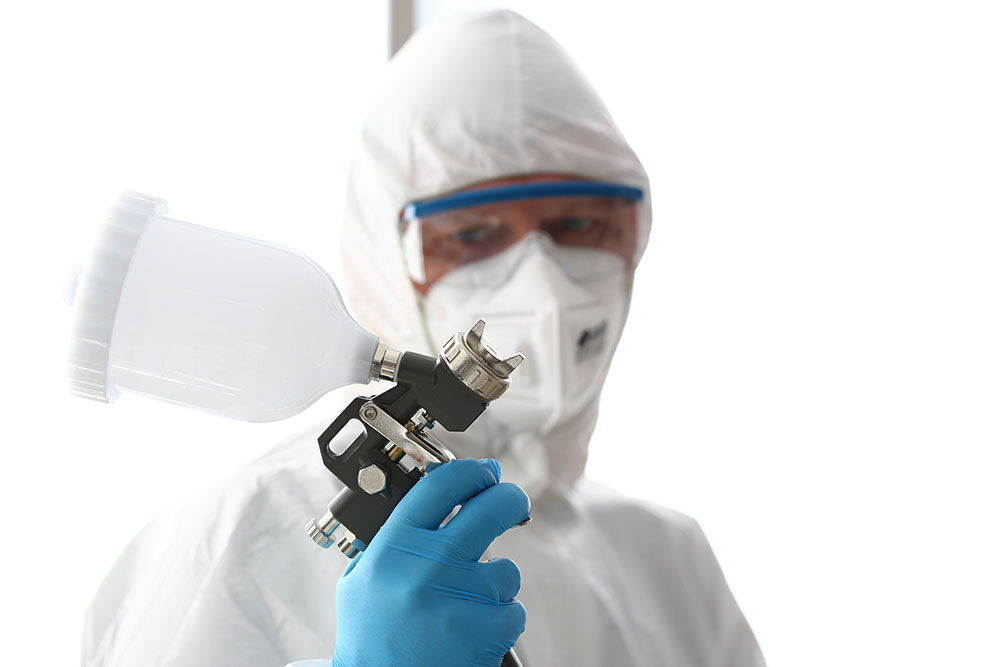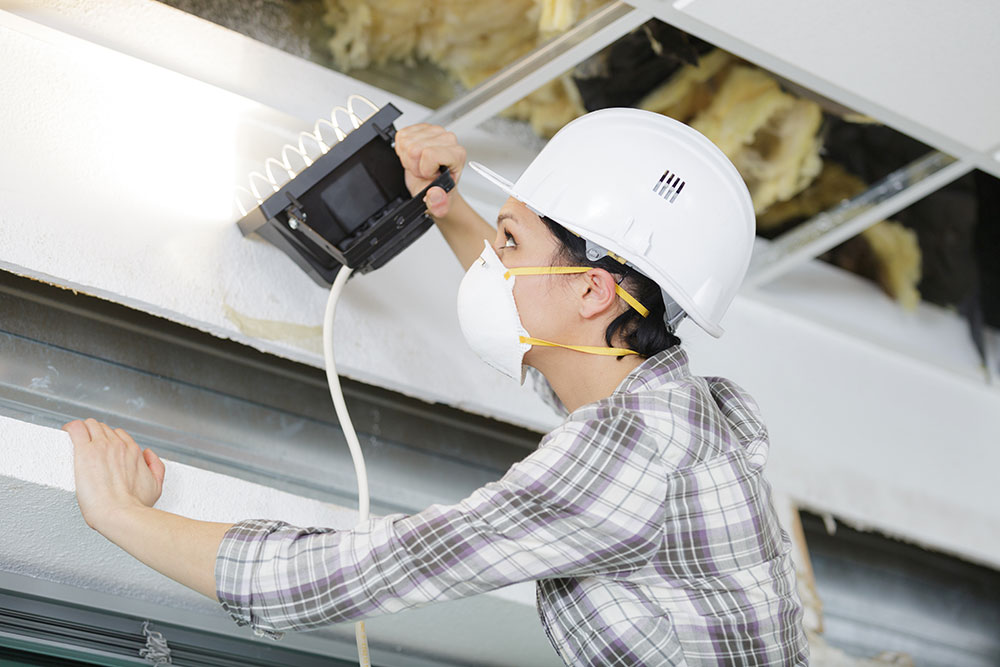Guide: Finding the Right Respiratory Equipment for Your Work
Respiratory protective equipment or RPE is a form of personal protective equipment (PPE). It is required in workplaces where there is a high risk of airborne contamination.
There are three primary purposes of respiratory protective equipment:
- To protect the wearer from airborne contaminantsThese contaminants include fumes, which welders commonly face. Asbestos and hazardous chemicals can enter the respiratory system, causing health problems. It is, therefore, essential for workers to wear the necessary equipment to protect them against these toxic substances.Some people disregard dust in the air, but workers, including those who deal with sawdust, need RPE. Infectious substances should also be kept out of the respiratory tract by wearing proper RPE.
- To maintain oxygen levels in the bodyIndividuals who work in confined spaces may need assistance in breathing. It is why they need the right protective equipment.
- Work-related RPEDivers, for instance, require a specialised form of breathing apparatus, known as respirators.

Types of Respirators
Respirators are often classified into different categories. Some have air-purifying capabilities, which protect the worker with its filter. This filter acts as a purifier to make sure the air breathed in is safe and clean. This type can either be reusable or disposable and can be powered or non-powered.
Powered respirators are those that utilise a fan for drawing air in. Then, the filter works by purifying the air that enters the respirator. As a result, the wearer only breathes clean air. Meanwhile, a non-powered respirator does not have any fan. Instead, wearers use their own breath to draw air in. The same process happens where the filter cleanses the collected air.
Aside from an air-purifying respirator, another type of respirator uses supplied air. It comes from a different source, such as an air cylinder or a compressor.
Often, employers are required to provide training to their workers before they can use these respirators. They should also know the dos and don’ts of the PPE. For instance, respirators that are designed to help purify the air should not be used in areas with low oxygen levels. They should never be used in an area with airborne contaminants as well, even if they help clean the air. Using them in these cases can endanger the worker’s life and health.
One thing that employers need to understand is that respiratory protective equipment should not be considered the only solution. RPEs are the lowest form of protection. It is still the responsibility of the employers to put in other control measures to limit or, if possible, eliminate contaminants in the air.
Selecting the Right Respirator
When shopping for an RPE, it can be overwhelming when you find numerous options. Different shapes and sizes are available, along with the various types. It can be a confusing buying experience. The following will help guide you in deciding which ones to buy:
1. Fit-test the Mask First
Respirators vary in sizes. Many times, workers complain that the masks are not suitable for their face shape or size. Trying on these masks is essential, especially for those who will wear a respirator.
2. Know Which Mask to Use
Some masks are designed exclusively for a particular purpose. Others can protect you against body fluids but not airborne particles. An example is a surgical mask. This type can protect the wearer from blood or saliva droplets – even large ones. However, it is not capable of protecting the wearer from small particles, including gases, vapours, and aerosols. The same applies to dust and patient care masks. These RPEs are not labelled with AS/NZS 1716.
3. Consider Your Job
Before you buy a mask, you should think about the level of protection that the respirator gives based on the air contamination in the workplace. Is it appropriate for your job? For example, you work as a welder. Can the mask protect you against the harmful fumes in the air?
Another thing to think about is the filter in the respirator. Is it suitable for the contaminants present in the workplace? Figure out the answer before you purchase.
4. Some Masks Are Only for Specific Situations
Respirators can be worn in certain cases, such as when you work with biological hazards, including microorganisms. Others are designed for divers, workers in areas with low oxygen or contaminants immediately hazardous to health, and for unknown air particles. There are also respirators for emergency escape or for areas where there is carbon monoxide. If the atmosphere is explosive or flammable, there are suitable respirators for these situations as well.
If you have a respirator for work, make sure that it complies with AS/NZS 1716. The RPE should contain markings of this Australian standard, which means it meets the legal requirements.
5. Make Sure the Mask or Respirator is Suitable to the Air Contamination Levels You Are Exposed to
Employers should educate their workers about the level of air pollution on the job site. Based on this crucial information, employees understand which type of respirator to use in the workplace. Some areas have higher contamination. Therefore, they call for a more protective RPE.
6. Select the Right Type of Filter
The filter in a respirator that can purify the air can protect the wearer against dust, aerosol, and gases. These filters can be removed or changed, but others are built-in, which is common in disposable masks.
Aside from the mentioned type of filter, there are other options available, including:
- Particulate filters are useful in protecting against microorganisms, as well as other liquid and solid particles. However, if the mask uses particulate filters, it should not be worn to protect against solvent vapour and other gases. A particulate filter can be designated as P1, P2, or P3. Out of these filters, the highest is P3, but it is only useful if the P3 filter is a full-face respirator.
- Gas and vapour filters are for absorbing a high level of contamination in the air. Check the label of the respirator or filter. From there, you can see its Class, which can either be Class AUS, Class 1, 2, or 3. The filters also define which gases they can protect the wearer from. For example, if you see that the filter is marked with K, it means that the respirator can keep you safe from ammonia.
- A combination of gas and particulate filters is available in the market today. Be aware though that there is no complete or comprehensive protection, even if the mask tells you it can protect you against particles and gases. Therefore, it is still essential to know the contaminants these masks can guard your respiratory health.

The amount of information floating around based on the filter types of these respirator masks can be too much to take in. Apart from the kinds of filters mentioned above, there are also classifications to know about for gas and vapour filters, such as:
- Type A for organic vapours or solvents with a boiling point over 65 degrees Celsius
- Type B AUS (often called B1) for acid gases, including chlorine, hydrogen chloride, steel pickling, and chemical manufacturing
- Type B2 or B3 for manufacturing plastics, refining gold ore, and those exposed to hydrogen cyanide and other acid gases
- Type E for the casting of metals, manufacturing of bleach and sulphuric acid, as well as petroleum refining
- Type G for organic vapours, spraying pesticide, and other agriculture chemicals
- Type K for ammonia use, manufacturing of fertilisers, plastics, and explosives
- Type AX for organic compounds that have a low boiling point or below 65 degrees Celsius, such as dimethyl ether and vinyl chloride
- Type NO for nitrogen oxides
- Type Hg for those working with mercury or inorganic mercury compounds
- Type MB for methyl bromide and fumigation
Some respirators may not fall into the list above. In this case, it is up for the employer to identify which type of respirator the workers should use in the workplace.
Other Factors That Affect the Selection of RPEs
The face shape and size will determine the PPE to wear. It is not a one-size-fits-all matter. Some people have facial hair, which can prevent the respirator from closing correctly. Other workers have pre-existing conditions, such as asthma and other chronic lung diseases. In this case, they may not be suitable for wearing respirators.
Some people also experience psychological fears when they wear a full-face respirator, for example. They get anxious or become claustrophobic. These situations should be considered, as well.
The duration of respirator use per day is an important factor. Work tasks can be quite tricky, especially when a hefty mask is worn. Unpowered RPE, for example, can become uncomfortable when worn for two hours or more. Because of the discomfort, workers have a high risk of removing the mask even when they are still in a contaminated place.
It is not to say that a half-face disposable respirator is the best choice. In many cases, particularly when risks of splashes are involved, this type of respirator is not applicable.
Apart from purchasing the mask or respirator, workers should also understand that it is their responsibility to inspect and maintain their respiratory protective equipment.
The Workers Shop has a range of safety and protective gear, contact us or drop by the store today to get all of your essentials.
